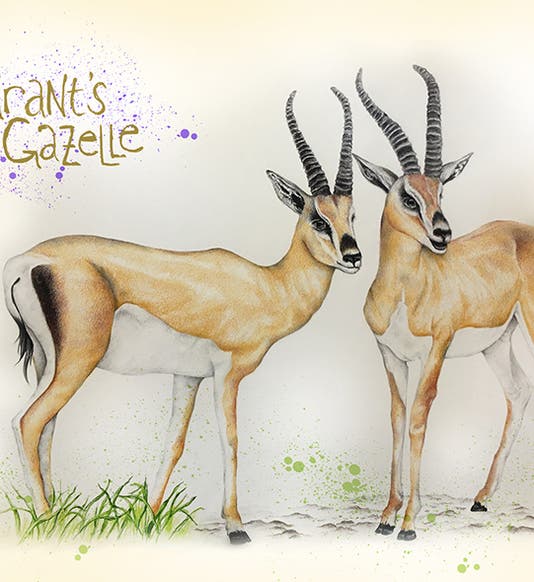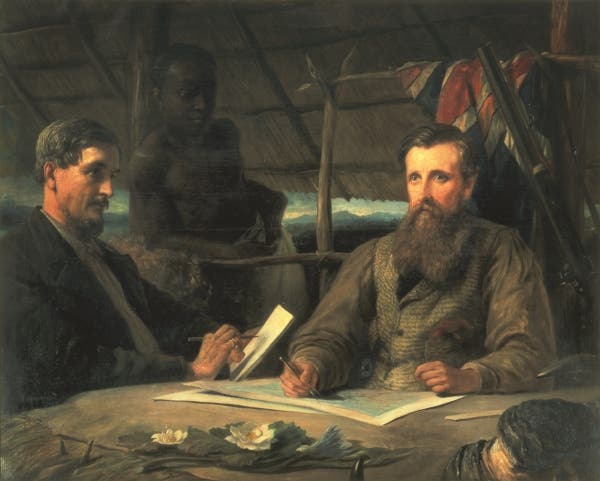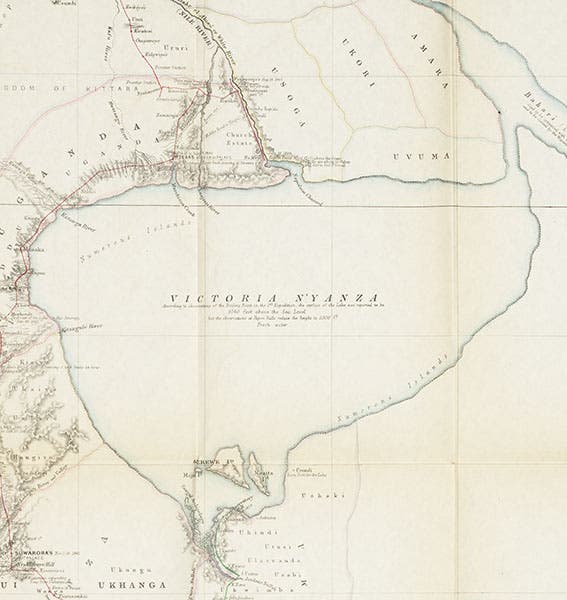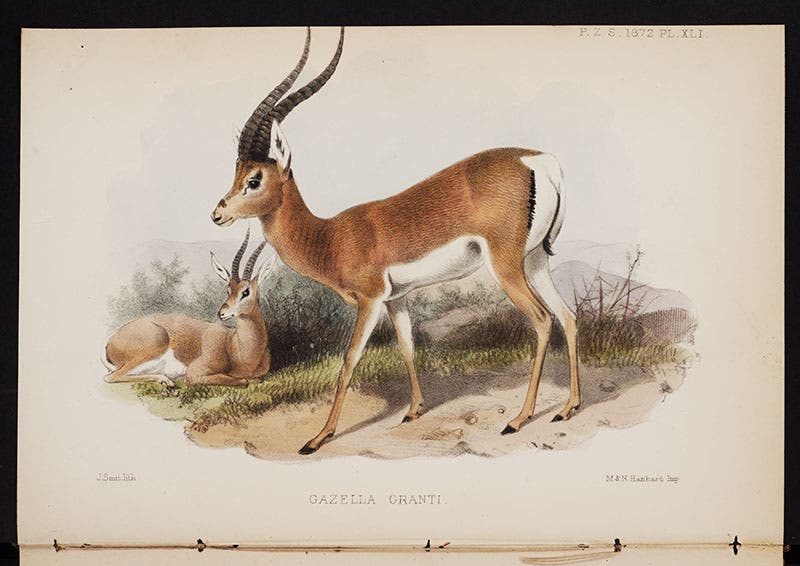Scientist of the Day - James Augustus Grant
James Augustus Grant, a Scottish explorer, was born Apr. 11, 1827. In 1860, John Hanning Speke was gearing up for a return expedition to Africa to look for the source of the Nile, and after falling out with Richard Burton, his partner on the first expedition, he chose Grant as his replacement. After trekking through much of East Africa, they successfully reached Lake Victoria, and Speke later claimed to have proved that this was the source of the Nile, although he did not quite do so. Speke published a map of his East Africa expedition in the Journal of the Royal Geographical Society in 1863, which we reproduce entirely in our third image, and in detail in the fourth, centered on Lake Victoria.
Grant was not part of the final thrust to the lake, because he had come down with a serious leg ulcer, could not walk, and had to be borne about on a litter. But he was a major part of the rest of the 3-year expedition, and when he returned, he wrote a book about the enterprise, called A Walk Across Africa (1864). We do not have this book in our library, nor the account by Speke; we should get them. This was, after all, a scientific expedition, sponsored by the Royal Geographical Society, and we have collected an otherwise outstanding collection of scientific voyages and expeditions, and have mounted four separate exhibitions on scientific exploration: Voyages: Scientific Circumnavigations (2002), Science Goes West (2004), Napoleon and the Scientific Expedition to Egypt, and Ice: A Victorian Romance (2008).
Since we do not own his book, there must have been some other reason for selecting Grant as a Scientist of the Day. There was, and it relates to Grant's eponymous animal, Grant's gazelle. Eighteen months ago, our staff designer Melissa Dehner was invited by us to make some drawings of eponymous birds, i.e., those named after important zoologists or ornithologists who might be candidates for Scientist of the Day. Melissa obliged and contributed some memorable sketches of such birds as Latham's snipe, MacGillivray's warbler, and Natterer's cotinga, to accompany my less-exciting short essays. Then Melissa got diverted by her real duties – designing exhibition panels, annual reports, bookmarks, etc. – and nine months has gone by since her last bird sketch for us. Since she mentioned in passing some time ago that she would really like to draw some exotic mammals instead of birds, we decided to tempt her with a majestic gazelle, and she obliged (first image).
Grant and Speke shot a number of game animals in East Africa, including a variety of gazelles, and the skins, along with drawings and field observations, were sent back to the Zoological Society of London in 1863. Most of the the skins were lost en route, but Grant's description and sketches of one particular gazelle caught the attention of a later naturalist named Victor Alexander Brooke, who in the 1870s was compiling an illustrated book on antelopes. He realized that Grant had described an unknown species, so he named it Gazella granti (now Nanger granti), Grant’s gazelle. He made the announcement in the Proceedings of the Zoological Society (1872), and he accompanied his description with a lithograph by Joseph Smit, who was one of the most talented zoological artists of the Victorian age (fifth image). I did not show Smits’ lithograph to Melissa until after she finished her own composition. I think they make a lovely pair of bookends for this notice.
The dual portrait (second image), painted in 1864, depicts Grant at the left and Speke on the right; it seemingly shows them at one of their East African camps, but it was posed in London, because the native between them, George Tembo, had been brought to London by the consul to Zanzibar in 1863 and had nothing to do with the Speke-Grant expedition.
Dr. William B. Ashworth, Jr., Consultant for the History of Science, Linda Hall Library and Associate Professor, Department of History, University of Missouri-Kansas City. Comments or corrections are welcome; please direct to ashworthw@umkc.edu.










